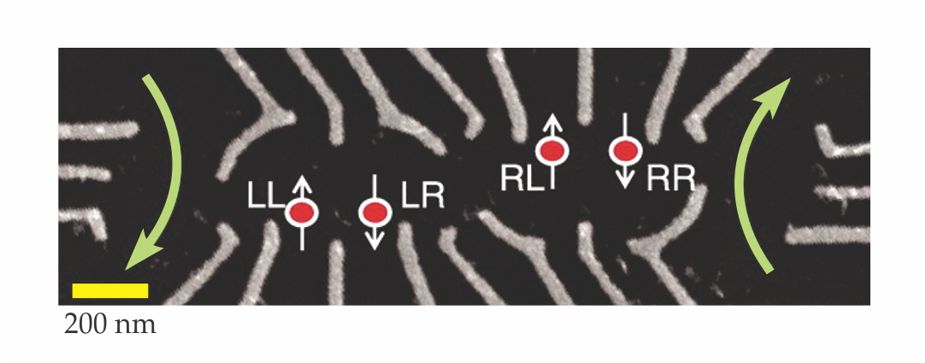Entangled two-spin qubits
DOI: 10.1063/PT.3.1593
Entangled two-spin qubits. Individual spin states in quantum dots were one of the systems first proposed for implementing qubits for quantum computation. Among their advantages are their potential for scalability and for miniaturization. But they are hard to control, and they can also quickly decohere and lose the information stored in their quantum states. In contrast, qubits built from pairs of spins in two adjacent quantum dots are much more easily controllable and more isolated from their environment. That isolation, though, makes it difficult for researchers to couple them—a critical step in any computation process. Now, Amir Yacoby and colleagues at Harvard University have demonstrated a way to couple two qubits. Among the factors influencing each qubit is the local electric field, which affects the qubit’s charge distribution and causes its quantum state to evolve. When the two qubits’ pairs of quantum dots are fabricated close to each other, as in the electron micrograph, the charge configuration of one affects the electric field of the other. Thanks to that coupling, the researchers were able to manipulate the pair of qubits and entangle them. Though the success of the entanglement, as captured by the fidelity parameter, was lower than that achieved by other solid-state qubit systems, the team foresees readily implemented improvements to their quantum gate. (M. D. Shulman et al., Science 336, 202, 2012.)
More about the Authors
Richard J. Fitzgerald. rfitzger@aip.org







